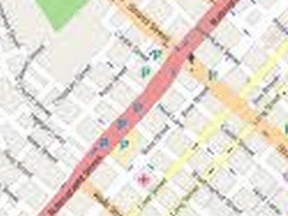If reports that Google will add a buy button to some mobile search results are true, the new service could impact ecommerce, particularly for small and mid-sized online stores that might not be able to compete with large retailers for paid clicks.
The Google buy buttons will appear first on mobile search results pages, according to The Wall Street Journal. Shoppers who click on the buy button will be taken to a Google product page to choose product options — like size or color — and complete the transaction. Google would then pass on order information, including the customer’s name and shipping address, to the retailer.
Although Google would, reportedly, manage the payment processing, it would not take a percentage of the transaction. Rather, the retailer would simply pay a per-click advertising fee.
Google has not yet made an official comment about the program. But if it did launch buy buttons as reported, there could be at least four significant impacts on ecommerce.
1. Google Shopping Might Be Imperative
It has been speculated that Google’s buy button would be an extension of Google Shopping’s Product Listing Ads.
For Product Listing Ads, online merchants upload a product feed — including product photographs, prices, and information — directly to Google, which uses the product information to serve ads on its results pages. Advertisers pay when a customer clicks on the Product Listing Ad.
While Product Listing Ads are a good tool for ecommerce even without a buy button, they can also be relatively more difficult to manage than a simple Google AdWords promotion.
The challenge, for at least some online sellers, is to produce and maintain the product feed, which should be updated each time the product changes, such as for a price change, a significant change in inventory, or even a special sale promotion.
If, in fact, Google does start to offer buy buttons with its Product Listing Ads, participating in Google Shopping might become an imperative for Internet retailers. Even small sellers would need to figure out how to generate product feeds and upload those feeds to Google.
Remember, however, that these are still paid ads. So some small online sellers might have to spend more to compete.
2. Mobile Commerce Sales Could Increase
Google buy buttons on mobile search results pages might also prove to be a huge boon for mobile commerce.
Increasingly, shoppers use mobile devices to search for products. But mobile purchases have not grown proportionally. It seems that many shoppers simply like to find products on smartphones, but make purchases either in-store or via a laptop or desktop computer, perhaps because order processing on a mobile device is still relatively difficult compared to typing in payment card information on a full-sized keyboard. This fact would imply that there are still barriers inhibiting mobile commerce’s growth.
If Google were able to make purchasing from a smartphone a uniform and easy process, more mobile shoppers might do it. In turn, retailers participating in Google’s buy now program would also, seemingly, gain a competitive advantage
3. Content Marketing Will Be Even More Important
A Google buy button displayed on mobile search results pages could change the dynamics, if you will, of search engine optimization. Most marketers believe that an organic listing on a Google search-result page is typically better than an ad on that same page.
But when the ad does significantly more for the shopper, like streamlining the purchase process, it may become a lot more powerful relative to organic results.
With this in mind, some marketers might invest even more into content marketing, which seeks to build lasting — search-engine-ad resistant — customer relationships.
4. Customer Profile and Loyalty Challenges
The Google buy button might create at least one new customer-service problem. Since Google would not, apparently, be sharing customer payment information, online sellers might not gain complete profiles for those customers who use the Google buy button.
For example, imagine that a new customer buys a package of deodorant sticks from an online retailer’s store. Deodorant, of course, is a consumable. So in a few weeks or months the retailer might send the customer an email suggesting a reorder. On the retailer’s own site, the reorder process could take just one or two clicks.
Now imagine the same new customer made the purchase using a Google buy button so that the retailer does not necessarily have a payment token representing the customer’s payment information. When the customer tries to reorder the deodorant sticks, she will need to add payment information, potentially, increasing the number of steps required and the relative complexity of the order.
Separately, customers using the Google buy button would be experiencing shopping with Google, not shopping with the retailer. This is similar to Amazon’s marketplace, wherein a shopper might be buying from a small retailer in Wisconsin, for example, but experiencing shopping with Amazon.
While this is speculative, a successful Google buy button program could impact customer loyalty.




